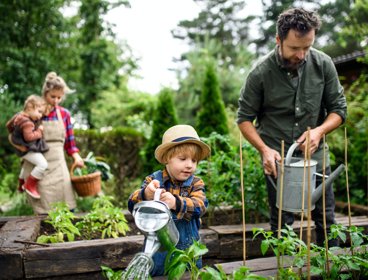Dr Sophie Hadfield Hill is known for her research into urban space, sustainable communities and how they intersect with children and young people’s everyday lives. More recently, these themes have been explored in the content of newly emerging economies, such as India.
You can follow Sophie on Twitter @HadfieldHill
Professor Peter Kraftl is well known for his research on the everyday lives of children, including the geographies of education and architecture. He is currently Editor of the journals Area and Children’s Geographies.
You can follow Peter on Twitter @peterkraftl
What are sustainable urban communities and how do these spaces interact with the everyday lives of young people? We discuss young people’s experience of changing places with Dr Sophie Hadfield Hill and Professor Peter Kraftl from the School of Geography, Earth and Environmental Sciences at the University of Birmingham.
Key words
Belonging
The feeling of attachment to a particular group or place, from a local, national, or transnational scale.
Citizenship
The relationship between citizens and the state and the importance of understanding how institutions, rights, laws and responsibilities affect the political and economic processes that shape our lives.
Leftover spaces
Parts of urban spaces that have been become disused, disregarded, or overlooked, due to lack of development – for example, abandoned railways, or vacant buildings.
Mobility
Broadly, it refers to the movement of people. It is different from migration in terms of spatial and temporal scale. It matters because of how it is related to power and agency. For example, how categories such as age, class, gender, and race affect a person’s movement.
Participatory geographies
An approach to research, learning and teaching that engages the world, local people and communities as co-researchers and producers of knowledge as part of, and working towards transformative change to people, place and society.
Sustainable Urban Community
Part of the Communities Plan sets out by Government's in 2003 that aimed to build sustainable and inclusive communities across the UK.
Lesson ideas
Draw a map of your local area; of the areas that mean something to you, it might be your favourite place, or places you visit locally. Reflect, is this space designated as important by policy or other institutions, or have you made it important to you through other means?
In groups, pupils should work together to research and put forward their design ideas for a sustainable urban community. What do they think it would look like? How would it differ from their currently experience of place, or urban spaces they have visited? Consider architecture, design and inclusivity of different ages.
Ask pupils do consider: how can we make children’s voice heard? Discuss the importance of representing the experiences of young people.
Pupils can interview one another about their experience of place. Ask them to describe their journey to school from home this morning. What does the local area look like? How do they interact with it? In essence, this is an opportunity for pupils to better understand the concept of mobility.
Links
Garden villages: Locations of first 14 announced (BBC, 2017)
Suggested reading
New Urbanisms in India: Urban Living, Sustainability and Everyday Life (2016)
Sustainable communities: building for the future (2003)
The UN convention on the rights of the child
Horton, J., Hadfield-Hill, S., Christensen, P. and Kraftl, P. (2013) Children, Young People and Sustainability: Introduction to Special Issue. Local Environment 18: 249-254
Horton, J., Hadfield-Hill, S. and Kraftl, P. (2015) Children living with Sustainable Urban Architectures. Environment and Planning A. 47: 903-921



